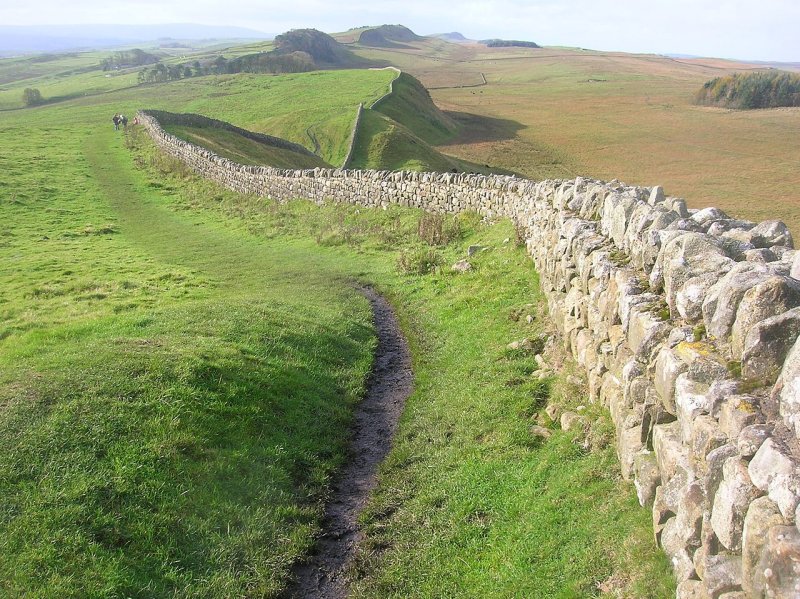Hadrian’s Wall: North-West Frontier Of The Roman Empire For Nearly 300 Years
A. Sutherland - AncientPages.com - The Romans were skilled builders, and throughout their vast empire, we find their impressive, massive, and long-lasting structures.
A view of Hadrian's Wall showing its length and height. The upright stones on top of it are modern, to deter people from walking on it. Image credit: quisnovus - CC BY 2.0
"The most impressive Roman remains in Britain today are military. Foremost amongst them are the fortifications of Hadrian's Wall, which hints at Britain's place within the Roman Empire.
It was not a sleepy, urbanized province like Greece, Italy, or North Africa. Britain sat on the edge of the empire, somewhat precariously, since half of the island lay within the sphere of "Barbaricum."
Warfare, or the threat of it, was a fact of life.: three of Rome's thirty legions sat here waiting to test their mettle against the hostile tribes of the north." 1
Famous Hadrian's Wall, also known as Picts' Wall, Vallum Hadriani (in Latin), or simply the Roman Wall, was built on the northernmost fringe of the empire. The emperor Hadrian visited Britannia in AD 122 and ordered his generals to build a wall from the banks of the River Tyne near the North Sea to the Solway Firth on the Irish Sea.
Hadrian's Wall facing east towards Crag Lough. The rocky outcrop is the Whin Sill, of volcanic origin. Image credit: Michael Hanselmann - CC BY-SA 3.0
The construction would prevent raiders from the north from destroying the strategic Roman base at Corbridge in Northumberland.
The 800 soldiers lived and worked at Housesteads in Roman times. The fort's original name was 'Vercovicium,' meaning 'the place of the effective fighters.'
Hadrian's famous construction consists not just of the Wall itself but many structures such as forts, bridges, towers, temples, civil settlements, mile castles (small guard posts) with two turrets built at each mile, and many other constructions.
The structure was 80 Roman miles (about 73 modern miles or 117 km) long. It was built in 5-mile stretches, with seventeen forts. Smaller forts were built every mile, and between these were signal turrets.
Much of Hadrian's Wall was about 10 Roman feet wide - 3m or 9.7 modern feet. It stood about 5 to 6 meters tall (16 to 20 feet). It was almost a third wider at the base than at the ramparts.
Building the Wall, to which 4 million tons of stone were used, was an ambitious task for eighteen thousand soldiers who worked hard. Most parts of the Wall and buildings were constructed of local stone. Only the eastern 30-mile-long section was in turf.
It took 15 years to complete the work.
Although mainly built by soldiers of the three legions of Britain, the second-line auxiliary troops operated the Wall. Its purpose was to control movement across the frontier and record low-intensity threats, but there was no intention of fighting from the wall top.
The soldiers were nominally either 500 or 1,000 strong regiments, infantry or cavalry or both, and trained to encounter the enemy in the open. The 500-strong mixed infantry and cavalry unit was the workhorse of the frontier. Each fort on the Wall appears to hold a single auxiliary unit.
The troops were based in the forts and mile castles, which were rectangular fortifications built during the period of the Roman Empire and placed at intervals of approximately one Roman mile along several significant frontiers.
The soldiers were mainly recruited from the northwestern provinces of the Roman empire, though some were from further afield.
Hadrian's Wall - a defensive fortification in the Roman province of Britannia - served as a frontier for several Roman incursions into Caledonia, the Latin name given by the Romans to the land in today's Scotland north of their province of Britannia, beyond the frontier of their empire.
Hadrian's Wall did not exclusively serve the purpose of protection; when the Romans were not at war with the Caledonians, they traded with them.
There were originally 12 prominent forts along the Wall, and a few others were added later to 17. Occupied by about 10,000 troops, they controlled traffic between Caledonia and the Roman Empire.
Vallum, an earthwork to the south 120 Roman feet (about 35 meters) wide, consisted of a central ditch between two mounds. Did this unusual feature of Hadrian's Wall serve for traffic between north and south, or was it built for protection?
Another important building was the granary, with ventilation beneath the floor to avoid humidity and rot. Each had enough food stored to survive a year's siege. Hadrian's Wall continued in this form into the late 2nd century. After Hadrian died in 138, civilian settlements began to be built just outside the gates at Housesteads and other forts. Several temples were built to honor Jupiter and eastern mystery religions such as Mithraism.
According to ancient historical sources, a significant war occurred shortly after AD 180, when 'the tribes crossed the Wall which divided them from the Roman forts and killed a general and the troops he had with him.' The forts on Hadrian's Wall had a long life of nearly 300 years, and all continued to the end of Roman Britain into the early 5th century.
The latest coins found on Hadrian's Wall were minted in AD 403–6.
In the following years, Hadrian's Wall became a quarry for the stone to build castles and churches, farms, and houses along its line. Only from the mid-19th century did archaeologists and historians begin to study Hadrian's Wall or its still outstanding remains.
Written by – A. Sutherland - AncientPages.com Senior Staff Writer
Updated on January 4, 2024
Copyright © AncientPages.com All rights reserved. This material may not be published, broadcast, rewritten or redistributed in whole or part without the express written permission of AncientPages.com
Expand for referencesReferences:
1. Elliott P. Everyday Life of a Soldier on Hadrian's Wall
Mark Richards, Walking Hadrian's Wall Path
More From Ancient Pages
-
 Crosby-Schøyen Codex: Ancient Coptic Manuscript Reveals Sermon That Spurred Violence Against Jews
Featured Stories | Jun 5, 2024
Crosby-Schøyen Codex: Ancient Coptic Manuscript Reveals Sermon That Spurred Violence Against Jews
Featured Stories | Jun 5, 2024 -
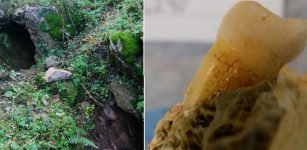 Bacteria Found In 4,000-Year-Old Human Molars Found In Cave – Responsible For Tooth Decay And Gum Disease – New Study
Archaeology | Mar 30, 2024
Bacteria Found In 4,000-Year-Old Human Molars Found In Cave – Responsible For Tooth Decay And Gum Disease – New Study
Archaeology | Mar 30, 2024 -
 Mysterious And Unexplained Encounter With Unusual Tiny Beings In Italy – The Thing – Part 1
Featured Stories | Jan 15, 2022
Mysterious And Unexplained Encounter With Unusual Tiny Beings In Italy – The Thing – Part 1
Featured Stories | Jan 15, 2022 -
 Strangest Maps Ever Created – You Have Never Seen Our World Like This!
Featured Stories | May 18, 2022
Strangest Maps Ever Created – You Have Never Seen Our World Like This!
Featured Stories | May 18, 2022 -
 Mystery Of The Ancient Bear Bones In The Aleutian Islands, Alaska
Archaeology | Oct 5, 2023
Mystery Of The Ancient Bear Bones In The Aleutian Islands, Alaska
Archaeology | Oct 5, 2023 -
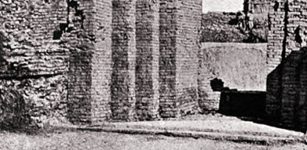 Sumerian City Of Girsu: Political, Religious Center With Large Archive Of Thousands Of Cuneiform Tablets
Civilizations | Jul 21, 2023
Sumerian City Of Girsu: Political, Religious Center With Large Archive Of Thousands Of Cuneiform Tablets
Civilizations | Jul 21, 2023 -
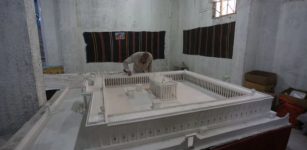 Memory Of Palmyra’s Ancient Ruins Preserved Thanks To One Man’s Dedication And Mini Models Of Lost Temples
Archaeology | Mar 24, 2021
Memory Of Palmyra’s Ancient Ruins Preserved Thanks To One Man’s Dedication And Mini Models Of Lost Temples
Archaeology | Mar 24, 2021 -
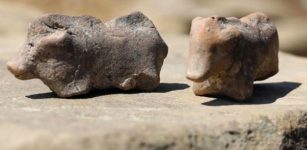 Unique 3,500-Year-Old Clay Pig Figurines Used As Children’s Toys Found In Poland
Archaeology | Aug 19, 2020
Unique 3,500-Year-Old Clay Pig Figurines Used As Children’s Toys Found In Poland
Archaeology | Aug 19, 2020 -
 Why Some Stories About Ancient Roman Emperor Nero Are Wrong
Featured Stories | Nov 21, 2016
Why Some Stories About Ancient Roman Emperor Nero Are Wrong
Featured Stories | Nov 21, 2016 -
 Paris Of Troy: He Caused Destruction Of Troy As The Seer Had Predicted
Featured Stories | Mar 26, 2019
Paris Of Troy: He Caused Destruction Of Troy As The Seer Had Predicted
Featured Stories | Mar 26, 2019 -
 Asgard: Enter The Ancient Kingdom Of The Powerful Norse Gods
Featured Stories | Aug 7, 2016
Asgard: Enter The Ancient Kingdom Of The Powerful Norse Gods
Featured Stories | Aug 7, 2016 -
 Mysterious Ancient Human Skeletons Found In Florida Lake Puzzle Archaeologists – Unknown Lost Settlement?
Featured Stories | May 21, 2024
Mysterious Ancient Human Skeletons Found In Florida Lake Puzzle Archaeologists – Unknown Lost Settlement?
Featured Stories | May 21, 2024 -
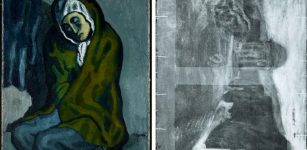 Hidden Details Discovered In Picasso’s Painting The Crouching Woman
Archaeology | Feb 28, 2018
Hidden Details Discovered In Picasso’s Painting The Crouching Woman
Archaeology | Feb 28, 2018 -
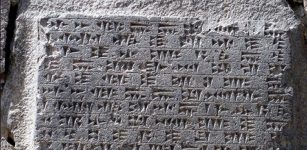 Ancient City Of Metsamor – Captured And Destroyed By Argishti I, The Ruler Of Urartu
Civilizations | Sep 11, 2015
Ancient City Of Metsamor – Captured And Destroyed By Argishti I, The Ruler Of Urartu
Civilizations | Sep 11, 2015 -
 Political Debates In Ancient Rome: Great Harshness, Personal Attacks And Unpleasant Atmosphere
Archaeology | Aug 29, 2018
Political Debates In Ancient Rome: Great Harshness, Personal Attacks And Unpleasant Atmosphere
Archaeology | Aug 29, 2018 -
 Ancient Mystery From The Age Of Taurus And The Murdered Astronomer – Evidence In The Arctic ? – Part 2
Featured Stories | Nov 1, 2019
Ancient Mystery From The Age Of Taurus And The Murdered Astronomer – Evidence In The Arctic ? – Part 2
Featured Stories | Nov 1, 2019 -
 Perplexing Accounts Of Ancient People Who Demonstrated Incredible Powers Of The Human Mind
Featured Stories | Feb 1, 2019
Perplexing Accounts Of Ancient People Who Demonstrated Incredible Powers Of The Human Mind
Featured Stories | Feb 1, 2019 -
 On This Day In History: Twelfth Council Of Toledo Initiated By King Erwig – On Jan 9, 681
News | Jan 9, 2017
On This Day In History: Twelfth Council Of Toledo Initiated By King Erwig – On Jan 9, 681
News | Jan 9, 2017 -
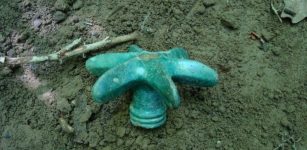 Peculiar Bronze Mace Head Left By Unknown Ancient Culture Discovered In Poland
Archaeology | Jul 1, 2019
Peculiar Bronze Mace Head Left By Unknown Ancient Culture Discovered In Poland
Archaeology | Jul 1, 2019 -
 Yayoi People (Korea) Interbred With Jomon People (Japan) Giving Birth To Ancestral Group Of Modern Japanese People
News | Oct 17, 2024
Yayoi People (Korea) Interbred With Jomon People (Japan) Giving Birth To Ancestral Group Of Modern Japanese People
News | Oct 17, 2024

